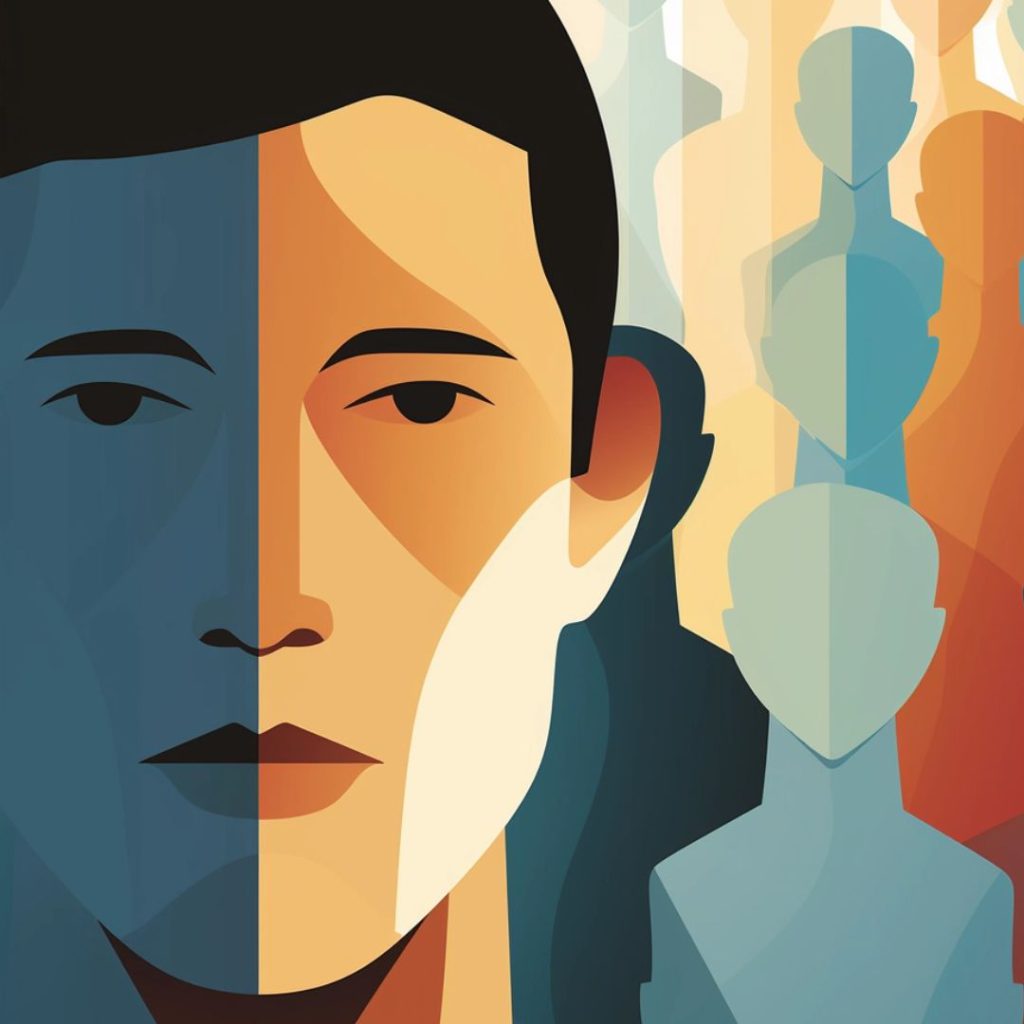BPD in Men vs. Women: Myths & Realities | Ultimate Guide

Borderline Personality Disorder (BPD) is a complex mental health condition characterized by intense emotions, unstable relationships, and difficulty regulating self-image. For years, misconceptions have painted BPD as primarily affecting women, leading to a flawed understanding of its complexities and hindering access to care for men living with this disorder. This article explores the similarities and differences of BPD in men and women, aiming to shed light on this often misunderstood condition.
Borderline Personality Disorder
Borderline Personality Disorder (BPD) is a complex mental health condition marked by pervasive instability in mood, self-image, and interpersonal relationships. Individuals with BPD often experience intense and rapidly shifting emotions, making it challenging to maintain a stable sense of self and relate to others consistently. Other key features include impulsivity, fear of abandonment, and a susceptibility to intense, often stormy, interpersonal relationships.
BPD is recognized as a relatively common psychiatric disorder, with prevalence rates varying across studies. Estimates suggest that approximately 1.6% of the general population in the United States is affected by BPD. It is important to note that the prevalence may differ across genders, emphasizing the need for a gender-specific examination of the disorder.
Common Symptoms and Challenges
Individuals with BPD commonly grapple with a range of symptoms that impact various facets of their lives. These symptoms may include:
- Self-harming behaviors
- Intense and unstable relationships
- Identity disturbance
- Chronic feelings of emptiness
- Difficulties in emotion regulation
- Impulsive actions
- Heightened sensitivity to perceived rejection.
| Discover: Myths about BPD Symptoms
BPD in Men vs. Women

The distribution of Borderline Personality Disorder (BPD) diagnoses exhibits noticeable variations between men and women. Research indicates that women are generally diagnosed with BPD at higher rates than men. However, gender differences in borderline personality disorder prompts a closer examination of how it would manifests differently in each gender.
Here are similarities and differences of BPD in men comparing to women:
- Internalizing vs. Externalizing: Women with BPD often exhibit internalizing symptoms like anxiety, depression, and self-harm behaviors. In contrast, men tend to express externalizing symptoms like anger outbursts, substance abuse, and impulsive actions. However, these are not absolutes, and individuals of both genders can experience a mix of both types.
- The Intensity Factor: Both genders grapple with intense emotional lability, rapidly shifting from elation to despair and struggling to regulate their feelings. This emotional volatility can significantly impact relationships and daily life.
- Fear of Abandonment: A hallmark of BPD is a pervasive fear of abandonment, leading to clingy attachment patterns or intense push-pull dynamics in relationships. Men and women often experience this fear differently, with men potentially resorting to controlling or aggressive behaviors, while women might engage in emotional manipulation or self-deprecation.
- Idealization and Devaluation: The tendency to idealize partners early on followed by abrupt devaluation due to perceived slights is another common struggle. These fluctuations can be incredibly destabilizing for both genders, creating a cyclical pattern of intense attachment followed by disillusionment.
- Comorbid Conditions: Both men and women with BPD may experience additional mental health challenges. Men are more likely to struggle with substance abuse, anger disorders, and antisocial personality traits, while women often encounter eating disorders, mood disorders, and post-traumatic stress disorder.
- Impact on Identity: Difficulties with maintaining a stable sense of self are common in BPD. This can manifest differently in men and women, with men potentially wrestling with issues of masculinity and self-worth, while women might navigate challenges with femininity and body image.
| Read more: Having BPD Traits Without Having BPD!
Factors Influencing Gender Differences

The relationship between the development of borderline personality disorder and gender differences is believed to be caused by biological, environmental and even societal influences shaping its unique presentation in men and women:
1- Biological Influences
- Brain Chemistry: Neurotransmitter imbalances, particularly involving serotonin and dopamine, might play a role in emotional dysregulation and impulsivity associated with BPD. Research suggests potential gender differences in these neurochemicals, possibly influencing symptom expression.
- Genetics: Studies indicate a genetic predisposition to BPD, with family members of individuals diagnosed with the disorder being at higher risk. However, the specific genes involved and how they interact with environmental factors are still being investigated.
2- Environmental Influences
- Early Life Trauma: Traumatic experiences in childhood, such as abuse, neglect, or family instability, are significant risk factors for BPD. The impact of these experiences might differ based on gender, leading to varied coping mechanisms and symptom presentations.
- Socialization and Gender Roles: Societal expectations and gender roles can significantly influence how individuals learn to manage emotions and build relationships. Men might be conditioned to suppress emotions and resort to externalizing behaviors, while women may face pressure to prioritize the needs of others, leading to internalizing symptoms.
- Attachment Styles: Early attachment patterns with caregivers can shape an individual’s ability to form healthy relationships in adulthood. Insecure attachment styles, often linked to childhood trauma, are frequently observed in individuals with BPD and can manifest differently in men and women.
3- Societal Influences
Societal expectations, cultural norms, and gender roles can influence the way individuals express and cope with emotional challenges. Moreover, societal stigmas and biases may impact the likelihood of seeking and receiving a BPD diagnosis, contributing to gender-specific prevalence rates.
| Dive deeper: BPD and Anxiety
BPD and Gender Dysphoria

The experiences of Borderline Personality Disorder and Gender Dysphoria can intersect and some studies suggest that individuals with gender dysphoria may have higher rates of BPD, indicating a potential association between the two conditions. The challenges arise in disentangling whether the co-occurrence is coincidental or if there are shared underlying factors contributing to both conditions.
Both BPD and Gender Dysphoria can involve intense emotional dysregulation, difficulty with self-image, and unstable interpersonal relationships. This overlap can make diagnosis and treatment complex, as symptoms of one condition might be misattributed to the other.
Individuals experiencing both BPD and Gender Dysphoria may face heightened vulnerability to mental health struggles, including anxiety, depression, and suicidal ideation. The stigma surrounding both conditions can exacerbate these challenges.
The potential for misdiagnosis due to overlapping symptoms can delay access to appropriate treatment for both Gender Dysphoria and Borderline Personality Disorder. This can lead to frustration, confusion, and further distress.
The fear of judgment and discrimination from healthcare professionals and society at large can deter individuals from seeking help for both conditions, particularly given the stigmatization surrounding BPD and Gender Dysphoria.
The overlap in symptoms can complicate accurate diagnosis. Additionally, gender dysphoria may be overshadowed or overlooked in the presence of BPD symptoms, and vice versa. Treatment approaches must be tailored to address the complexities of co-occurring BPD and gender dysphoria.
Therapy Approaches
- Dialectical Behavior Therapy (DBT): DBT, specifically designed for BPD, equips you with skills to regulate emotions, tolerate distress, improve communication, and build healthy relationships. It can be particularly helpful in addressing emotional dysregulation and impulsivity common in both BPD and Gender Dysphoria.
- Cognitive Behavioral Therapy (CBT): CBT helps identify and challenge negative thought patterns that contribute to distress and anxiety. This can be valuable in addressing low self-esteem and insecurities about body image, often present in Gender Dysphoria.
- Eye Movement Desensitization and Reprocessing (EMDR): EMDR can be effective in processing and healing from past trauma, a common factor in both BPD and Gender Dysphoria. By addressing the emotional roots of distress, EMDR can promote emotional stability and inner peace.
| Also read: Quiet BPD vs. BPD
General Treatment Strategies for BPD
Borderline Personality Disorder (BPD) often requires a multifaceted approach to treatment, aiming to address the complex interplay of symptoms. General treatment strategies include psychotherapy, medication management, and support from mental health professionals. As mentioned before, Dialectical Behavior Therapy (DBT), Cognitive-Behavioral Therapy (CBT), and psychopharmacological interventions are also commonly utilized to help individuals manage emotional dysregulation, improve interpersonal skills, and enhance overall well-being.
BPD and Gender-Specific Treatment Options

While many aspects of BPD treatment are applicable across genders, recognizing gender-specific nuances is crucial. Men and women may face different societal expectations, stigma, and interpersonal challenges, influencing how they experience and express symptoms. Tailoring treatment approaches to consider these gender-specific factors can enhance effectiveness.
For example, men with BPD may benefit from interventions that address societal expectations around masculinity and encourage emotional expression.
Women, on the other hand, may find value in therapies that explore relationships, societal roles, and identity within the context of their experiences. Gender-sensitive language, validation, and acknowledgment of societal influences are essential elements in creating a supportive therapeutic environment.
Continue reading…
HealWiser’s Last Piece of Advice
This article aimed to provide a comprehensive overview of BPD in men and women. However, it’s important to remember that every individual’s experience is unique. If you or someone you know is struggling with BPD, please reach out for professional help. Remember, you are not alone, and there is hope for recovery and a fulfilling life.
Sharing your experience can provide valuable insights and emotional support. So…
…share your story with HealWiser and others in the comments section below this post.






